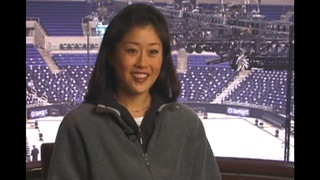Interviews
Defusing myths through The Hapa Project
It allows people to, hopefully, defuse some myths that may be about them. I think there’s these myths of “hybrid vigor” and “All you Hapas, you’re all beautiful, y’all have it going on, and everything’s great, and look at all the models out there and all the actors, and oh, man, Keanu Reeves is so good-looking.” Hopefully it defuses some of that because there’s a whole gamut of ages and ethnicities and physical statures—people look really, really different.
At the same time, I think it allows people to construct their identity and tries to show how different—I wanted to celebrate difference in it, I wanted to reclaim these terms that haven’t been very positive—Ainoko, or “hybrid” or “half-breed” or even “Amerasian” which is technically correct. It’s still got this kind of ‘75-post-Vietnam thing because that’s where it’s connotated, that’s where the documentaries are. And even “Hapa” being originally a semi-derogatory term in Hawai`i. I wanted people to be able to say who they were in their own words and reclaim these things and have a place where we could actually celebrate our differences.
Date: May 3, 2006
Location: California, US
Interviewer: Jim Bower
Contributed by: Watase Media Arts Center, Japanese American National Museum.
Explore More Videos

Results of being more American than Japanese
(1924-2018) Researcher, Activist

Trying to convey the meaning of the songs
(b. 1981) Enka Singer

Internship on a Native American reservation in Arizona
(b.1952) Master drummer, artistic director of the Taiko Center of the Pacific

Different tension between East Coast and Los Angeles
Japanese American Creative designer living in Japan

Differences between American and Japanese taiko
(b.1943) Shin-issei grand master of taiko; founded San Francisco Taiko Dojo in 1968.

Meeting Japanese Americans from the mainland in MIS
(1923-2011) Lawyer, MIS veteran, founder of Francis and Sarah Sogi Foundation


Sudden acceptance in Japanese society
(b. 1967) Hawai`i-born professional fighter in Japan

Ring name: "Yamato Damashi"
(b. 1967) Hawai`i-born professional fighter in Japan


Citizenship and identity
(b. 1967) Hawai`i-born professional fighter in Japan

Importance of self-representation in legislation
(1927-2010) Political Activist

Defining the term Nikkei
(1923-2011) Lawyer, MIS veteran, founder of Francis and Sarah Sogi Foundation


Support from the Japanese American community
(b.1971) Professional figure skater and Olympic gold medalist.
